North-Kivu: a complex chess game in which most of the checkers have their own agendas
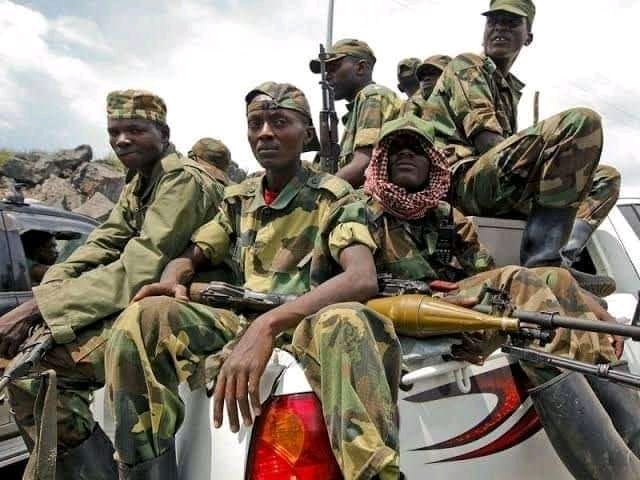
As always it is difficult to judge what exactly is going on in the Kivu’s. A lot of people who want to follow up on the ongoing problems rely on social media platforms such as Twitters where several pro- and contra frogs are croaking as loud as possible to advance their points of view. Most of them are based on fake facts and the Twitter war is pumping a lot of fog over the reality in the field. Yesterday another short video report was posted on the social media about what really happened in Kishishe at the end of last year. The title was promising as it insinuated mass killings but after having a closer look at the content of the pictures and the accompanying text, we had to conclude that the findings of the authors confirmed for a big part our own findings when we visited Kishishe at the end of last year, right after the government in Kinshasa accused the M23 to have slaughtered there nearly 300 innocent civilians. The UN even came out with a report that more than 170 people were killed there. We’ll come back to that later on in this article.
Another thing that comes back in lots of remarks on Twitter is the effectiveness of the East African Forces (EAF) that are now deploying in the region that the M23 is showing willingness to withdraw from some strategic positions. Kinshasa is granting the EAF 3 extra months to comply with the hope that they will position themselves more harshly with the M23 and not just as a tampon military force that simply occupies the areas the rebels evacuated. For the M23 this process will become a major test to prove that they are not only capable to stand their ground on the battle field but also on the political front line. Most people who know this region and the background of the M23 look at this rebel outfit as a well-oiled military machine with motivated soldiers and officers but with a less developed and somehow old-fashioned political wing that was unable just until know to gain the complete confidence of most of the Congolese refugees is Rwanda and in Uganda, the local grass roots communities in Masisi and in the Rutshuru plains and members of the local société civile.
The war between the FARDC and the M23 can never be looked at without paying attention to the broader picture of the chaos in the DRC. Several political parties are gearing up for the upcoming elections, President Tshisekedi is falling back on some of his old opponents and outcasts such as Jean-Pierre Bemba and Vital Kamhere, the country is plagued by more than hundred other rebellions in which more people are killed than in the war with the M23, with unrest and killings in and around Kwamouth (nearby Kinshasa), kuluna terrorism in Kinshasa itself, the Bunda dia Congo menace in Bas-Congo and with the ongoing quarrel about the so called ‘congolite’. I might even forget some other hot patatos that are looming over the country. But the ‘congolite’ issue in which Tshisekedi tries to neutralize a possible victory of Moise Katumbi might become the biggest problem during the next couple of months.
Kishishe
The killings in Kishishe were thrown on the propaganda mill of Patrick Muyaya, the spokesperson of the government in Kinshasa, as proof that the M23 was engaged in mass killings of innocent people. When they did this, they were convinced that nobody would be able to go and check these events on the spot. Julien Paluku, a Nande politician, the ex-governor of North-Kivu and a long-standing collaborator of the extremist Nyatura and FDLR-militia’s that were controlling this area claimed that more than 300 innocent people were killed in. Muyaya’s and Paluku’s narratives were copied by the international press and the UN. Some badly informed newspapers in Belgium even published this information and added to that that it was the Rwandan army that did this. We approached the M23 with the question to go and have a look on the spot and they agreed. They brought us to Tongo, Bambo and also to Kishishi where we could speak openly with the locals who were present. The M23 didn’t interfere with our work. It is true that we entered Congo without visas and that we were working there without being accredited by Patrick Muyaya & co and it is also true that we were protected by the M23. Without this protection we would have been killed by the FDLR and the Nyatura who still had their sleepers in this region. After Kinshasa issued a formal statement that we had entered the region illegally we were also accused of having falsify claimed to be working for Al Jazeera. We never did this but Al Jazeera openly published a letter that they had nothing to do with us and by doing this they strengthened the propaganda mill in Kinshasa. It does not stop there: the FDLR was given the order to ambush us on the way back from Bwiza to Tongo, a narrow path that had become un-usable by bush motor bikes or jeeps. M23 recce’s informed us about the danger, we took cover in a nearby M23 stronghold and a couple of hours later the ambushers were attacked by the M23. They killed several of them but also lost a couple of their own men. Thanks a lot, Al Jazeera! When we phoned your office in Nairobi you apologized for this act of stupidity, you told us that you had to do this to protect your own staff in Congo. But by adding up to our value to be neutralized you put our lives in extra danger. You also could have called us before nailing us on the cross and before the M23 clashed with those Hutu extremists to clear the road.

The AFP-crew that visited Kishishe a couple of days ago found no EA-troops on the spot. They were clearly not ready yet to move inn. They interviewed people we had also talked to, months before. The same guy who had brought us to the same banana plantation where to so called ‘mass grave’ was situated told you nearly the same thing he had told us. Another witness was interviewed with his face masked who came up with a story that the M23 had rounded up all the men in the village and brought them to a church to be killed afterwards. And that’s about it! Their article made mention of more than twenty casualties, a couple of skulls and human bones were shown that had made it to the surface (they might have been dug up by dogs). But they confirmed that our estimate had been nearly correct. We also had placed the interviews of several other villagers and witnesses online who had contradicted the statements of their masked witness. The AFP journalist(s) had wrapped up the story in another sheet, they had probably been able to approach Kishishi via the Rwindi-Kishishe axe that is under the control of the FDLR-FARDC coalition. We were falsely accused after our trip to Kishishi of being paid of by officials in Kigali so we also have the right to mention that this trip was done under the supervision and with the acknowledgment of people who saw an interest to counter our findings. But they failed in their efforts: despite the fact that AFP beefed up the value of their findings with a couple of colored insinuations they remained honest in their writings that not more than a couple of dozens of villagers and Mayi Mayi fighters had died there during the fighting in November of last year. We highly recommend that a completely neutral fact-finding mission will be set up to research the truth when peace returns, one without the input of the UN and groups such as Human Rights Watch (they also published a report in which Muyaya’s propaganda numbers were contradicted). The UN had come up with approx. 170 casualties in Kishishe and they had interviewed people in refugee camps that were under the control of the Nyatura and the FDLR. So I wonder if Patrick Muyaya has other arguments in stock to prove that the publicity bubble about Kishishi he launched at the end of year still has some credibility.
EAF
The trip of our AFP colleagues also showed clearly the slowness of the East-African troops to deploy as a buffer force and to avoid negative forces such as the FDLR and the Nyatrura to trickle in again. Little towns such as Bambo and Kishishi were used as the financial backbone of the FDLR for years. The nearby ‘Domaine’ had a near monopoly for agricultural products on the markets in Goma, tons of charcoal were feeding cities like Goma and Rutshuru and the FDLR was making millions of dollars with this trade. With this money they were able to maintain a certain influence in Rwanda and to feed and finance the more political Hutu opposition in Europe. The M23 chased them off and the whole FDLR-FARDC business construction came to an end. It is obvious that they’ll want to take this back. It is also obvious that the M23 will not allow this to happen, despite the fact that the EAF, in this case Ugandans, will start patrolling the villages and the bigger roads. After the M23 evacuated its positions in Kishishe a lot of refugees that had found refuge in Rwindi returned home and with them also FDLR elements. This would have proved more difficult for the FDLR if the EAC would have been on the spot already. The EAF had also shown slowness and unpreparedness in Rubaya (the coltan mine) and in a couple of other locations in Masisi where cows were looted and people were being killed by the Hutu radicals. The Burundian contingent even clashed with the Nayatura near Rubaya. Two of their soldiers were wounded and had to be evacuated and the M23 had to return to the spot to restore order. By reacting far too late the EAF put civilians at risk who were left behind without any protection. In another place the Hutu extremists even started to fight amongst each other to reclaim their lost properties. Todays incident in Kibumba where so called friendly FARDC forces attacked an M23 position is another example of the fact that the FARDC can always hide itself behind these forces if things turn bad for them.
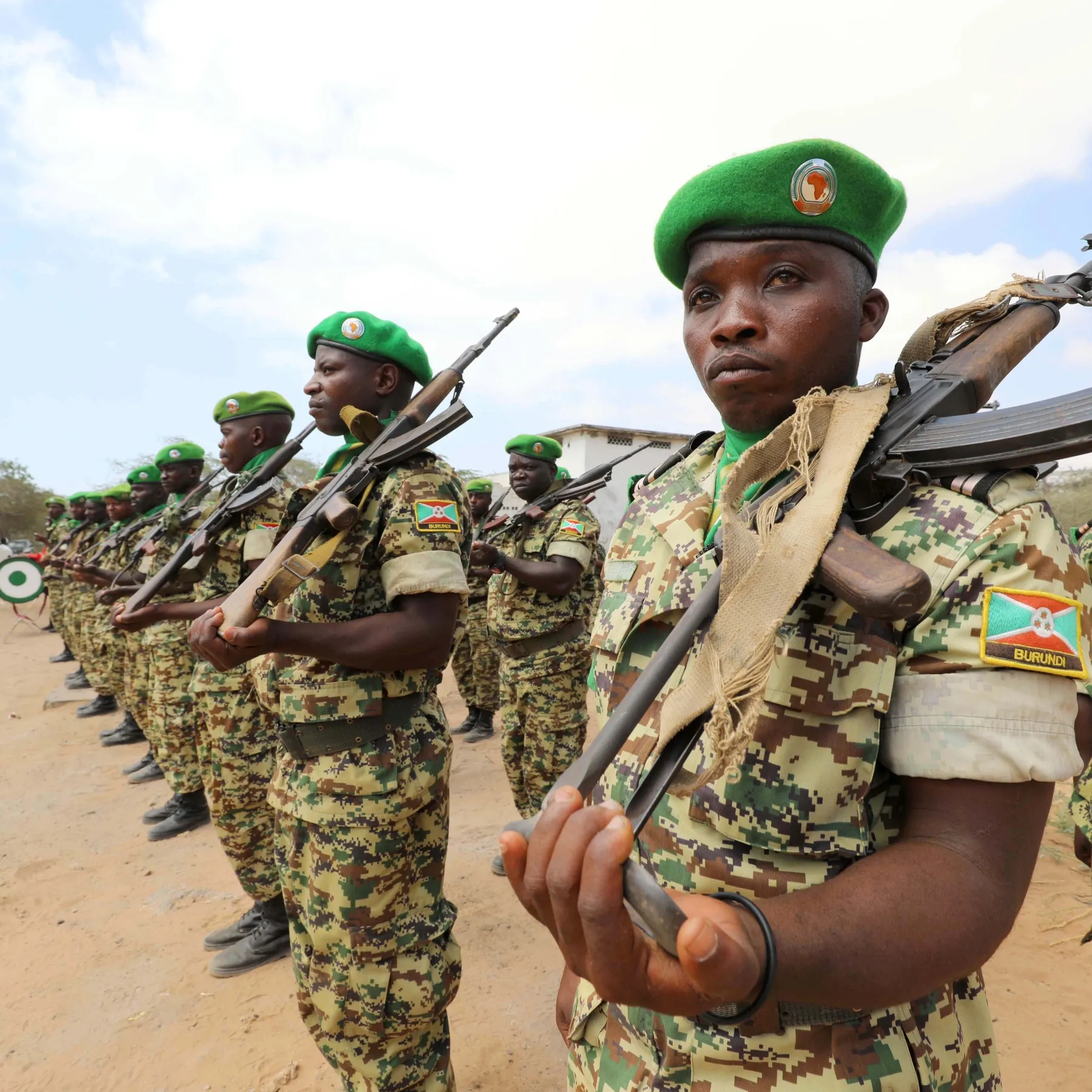
The Kinshasa government added and extra 3 months to the SOFA agreement they signed with the EAF six months ago. This means that the EAF-soldiers are being protected by the laws of their own governments when things go wrong. Without this SOFA deal the EAF has no legal protection in the DRC. During the last couple of weeks several critical voices were raised in Kinshasa and in Goma about the presence of the EA-soldiers in the Kivu’s. Kinshasa had hoped to be able to lure them into an anti-M23 fighting force but their generals and politicians reacted with statements that they had not come to Congo to fight the M23 and that their troops would be used as a tampon force between the warring factions and to protect the civilian population. Some critics in Kinshasa go as far as to say that the EAF will consolidate the presence of the M23 in the region and the friendly way in which they encounter the M23 rebels has become a thorn in their eyes. As we speak Kinshasa is trying to change and to influence this process: the new Congolese minister of defense and ex-warlord J-P Bemba announced a couple of days ago that a meeting will take place in Goma very soon during which this problem will be addressed. Insiders already know that Kinshasa is trying to get an extra strong mercenary force into the area and they are using this argument as a stick behind the door to influence the EAC. But shall the EAF leave when it comes so far? 3 months are an incredible long period in this country where the situation can change in two minutes, at any moment. When the EA forces move out the region would re-plunge into another and much worse war situation as it already is right now. The FARDC and their mercenaries would stand no chance against the M23.

M23
The M23 might be calling the shots on the front lines but many observers and insiders are openly asking themselves if their current political leadership will not be cornered when it comes to making deals that will consolidate their current position, their claims for recognition and the return of all the refugees and the respect of the deals that were made between the Congolese government and the M23 in 2013. Many families that sent their sons and daughters to the M23 are afraid now that the organization will go too far and that they will be too flexible towards the FARDC and Kinshasa. They know that deals like that are very often very questionable in a country that is already run by corrupt politicians, with an army that is openly collaborating with their arch devil, the FDLR! Several Congolese Tutsi intellectuals are quietly asking themselves the same question. It is also known that the structural backbone of the M23 is now, for a part, in hands of a younger generation of intellectuals who studied abroad. But so far none of these youngsters have been given political responsibilities.
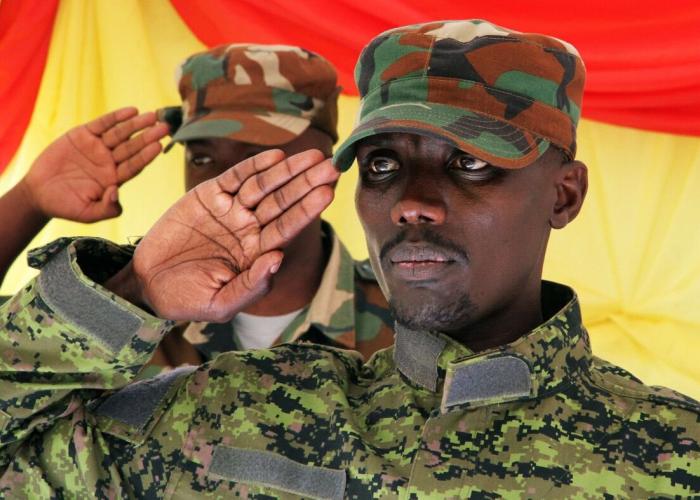
Most of the people we are in contact with here in Rwanda and in the DRC are very weary of these withdrawals. Their gut feeling is telling them that the history of the CNDP and the events in 2013 might repeat itself very soon if the M23 allows being send off to a far away place such as the Maniema or a chilly camp on top of one of the nearby volcanos. We also know that many of the M23 soldiers confronted their officers with these remarks. They were given the answer that they had to withdraw from certain positions to show their political goodwill but that they would stay present nearby to observe the situation and to intervene, if necessary, when the FARDC or the FDLR would pose a treat to their families. The other truth behind this situation is that the M23 cannot continue much longer to hand over territorial biscuits and cookies to please the outside world. They also want to remain in a good position to pick up the fight again once the EAF leaves the area.
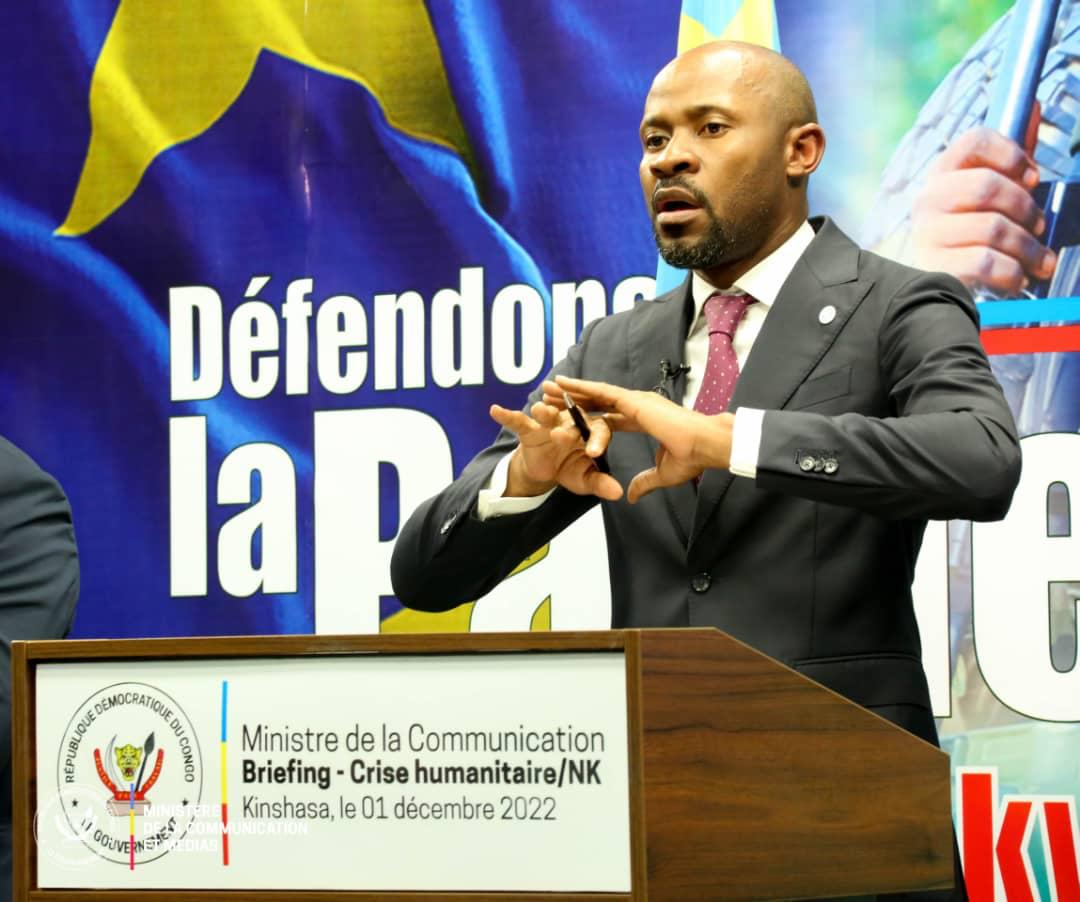
It would be naïve to believe that the M23 will comply to the foreign whish to allow the FARDC back in, certainly not without neutralizing completely the negative forces such as the FDLR and the Nyatura. Another important factor is the attitude of the government in Kinshasa itself: without their willingness to deal openly and direct with the M23 there can be no discussion about lasting peace in this region. And all the signs and facts are present that Kinshasa does not want this to start with.
Elections and other chaos
It would be completely wrong to look at the M23 story without looking at what is going on in the rest of the country. In this country where certain regions replunged into the practice of cannibalism and tribal wars, where more than 130 other rebel groups are calling the shots in and around their own tribal grounds, where the upcoming elections will most certainly result in the defeat of the current clique in power and where the current clique is trying to lock out other candidates with new racist laws such as the one about the so called ‘congolite’ nothing can change into the good direction. Several ‘kuluna’ gangs are terrorizing the people of Kinshasa who already live on a giant and badly structured garbage dump, in Katanga voices can be heard that this part of the country might decide to split off from Kinshasa if Tshisekedi will block the participation of Moise Katumbi with the argument that he is not a true Congolese citizen.
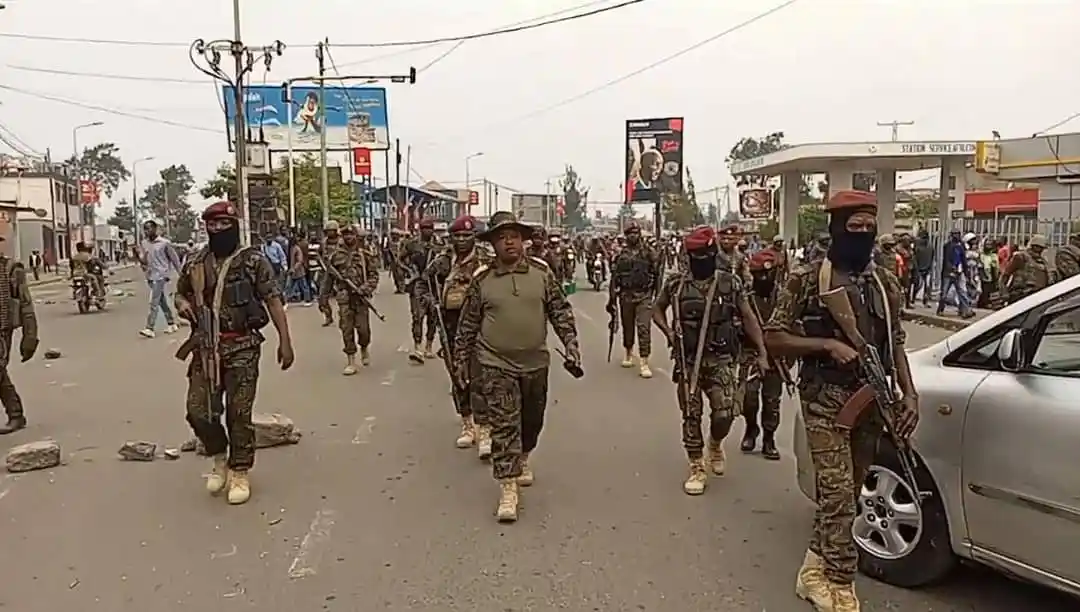
This chaos is playing into the advantage of Tshisekedi but it can also flash back right into his face. The popularity of other populists such as Fayulu and Dennis Mukwege as well. And his current collaborators such as Kamhere and Bemba might turn against him as soon as they were able to grab enough cash out of the honey pots they are allowed to play with now. A chess game in which all the checkers or ‘pions’ have their own agendas will be lost by both of its players. Most probably this war will linger on for a long time…
To be followed………………………
Adeline Umutoni & Marc Hoogsteyns
